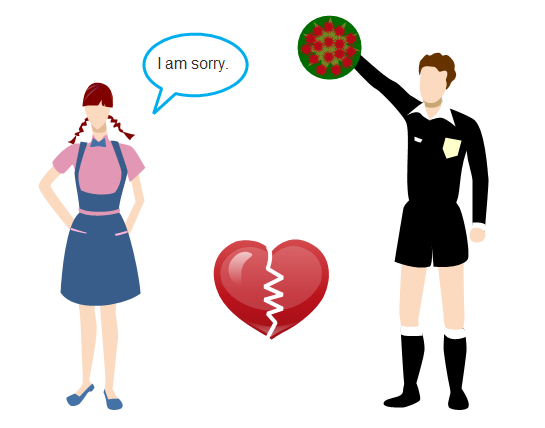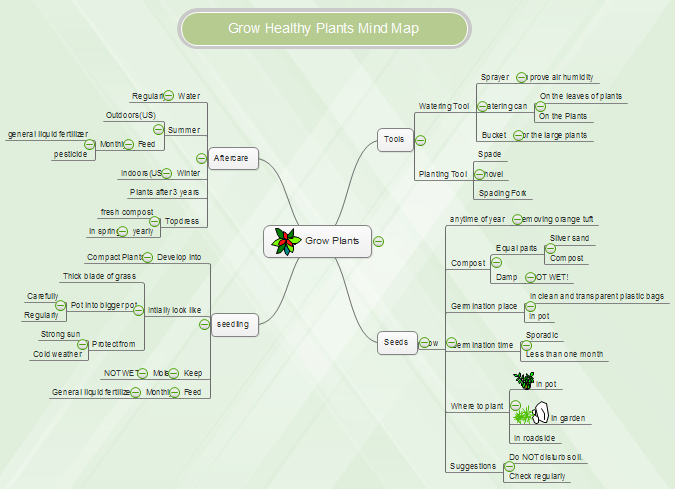Grow Healthy Plants Steps Mind Map
Growing plants may be easier than raising kids, but the two pursuits have their similarities. Building a good home environment for strong roots, weeding out bad company, giving extra protection at the toddler stage, providing support but more independence as they mature. This grow-healthy-plants steps mind map will make a plant expert.
The Benefits of Growing Healthy Plants
Those who spend significant time in spaces with healthy live plants, whether on the rooftop or within walls, are afforded many important advantages. Plants provide a natural solution to cleaner indoor air.
When plants transpire water vapor from their leaves, they pull air down around their roots. This supplies their root microbes with oxygen. The root microbes also convert other substances in the air, such as toxic chemicals, into a source of food and energy. It is also important to remember that the efficiency of plants as a filtering device increases as the concentration of chemicals in the air increases.
Moreover, you can also use some special plants to express your love for someone, but make sure that the one you love also loves you. Otherwise, you might experience severe heart break.

Last but not least, when you make the home plan, office layout, house plan, building plan and garden design, it is quite important to consider a question: whether you leave enough space for the plant in your house, office and buildings, etc. You can also learn how to grow lilies and how to grow roses here.
Steps to Grow Healthy Plants
Know Your Plants
No matter how much care and attention you give to plants, they aren't going to thrive if you don't know their specific needs. This is true whether you're buying a houseplant or planning an outdoor vegetable or flower garden. Some plants are able to do well in a variety of climates, but others require a controlled environment or can only survive in a specific region.
Select Your Seeds
One of the many benefits of growing your plants from seed is that you have a much larger variety of plants to choose from. Visit a local nursery or head online to look for the perfect seeds for your garden. Keep in mind that unless you intend to keep your plants indoors, you'll need to choose varieties that thrive in your local environment. When you purchase your seeds, pay attention to the ideal soil temperature, water requirements, nutritional needs, and light needs for each species of plant.

Prepare Soil Mixtures
Seeds can be planted outdoors, but suffer a much higher chance of dying if done so; garden soil is full of plant diseases and insects that can quickly kill of seeds. Therefore, start your seeds indoors in a soil-less potting mixture. Make your own mixture by combining equal parts of peat, vermiculite, and perlite. This will create a loose, disease-free material for your seeds to quickly germinate in.
Provide Right Amount of Sunlight and Water
Plants generally need either full sunlight, partial sunlight, or partial shade. This relatively simple distinction has a big impact on how well plants do. Watering can cause perfectly lovely people to become serial plant killers. They either water too little or too much. Many first-time gardeners or potted plant owners water plants more than necessary, believing that the more water the plant gets, the better. This is true for certain plants, but too much water can kill other plants.
Use Right Amount of Fertilizer
Fertilizers are sometimes categorized as organic or synthetic. Both provide the same nutrition, but they vary in their sources of nutrients and the way the nutrients are released into the soil. They break down in moist soil gradually, so they are available over time to the plants. The nutrients in organic products are derived from natural plant and animal sources, such as manures, wood, paper, fish and bone meal, and seaweed.
Fertilizers come in several different varieties: liquid, sticks and tablets, and granular and slow-release forms. Of these, the two best suited for indoor use are liquid and slow-release fertilizers. You should not use too little or too much fertilizers, just follow the instructions or ask experienced gardeners.


